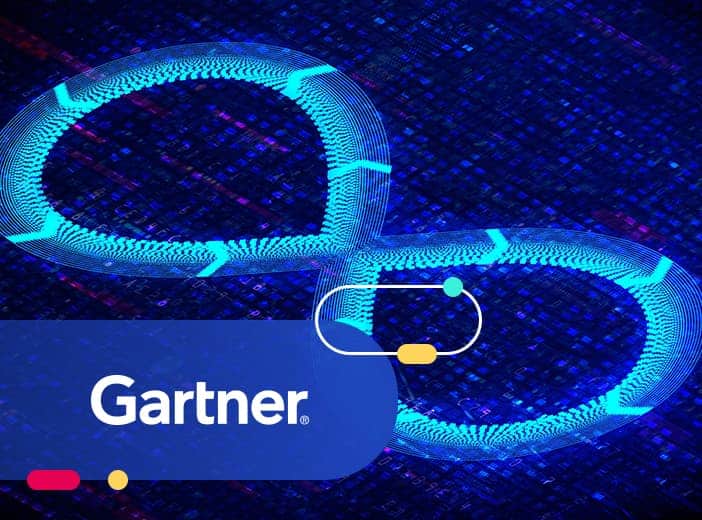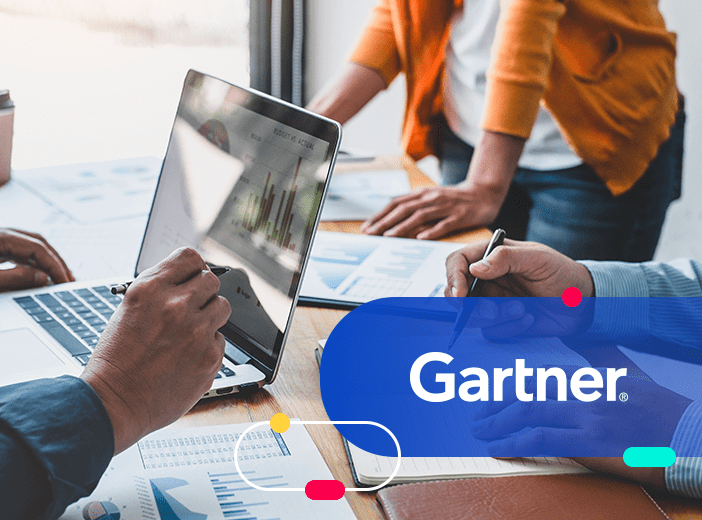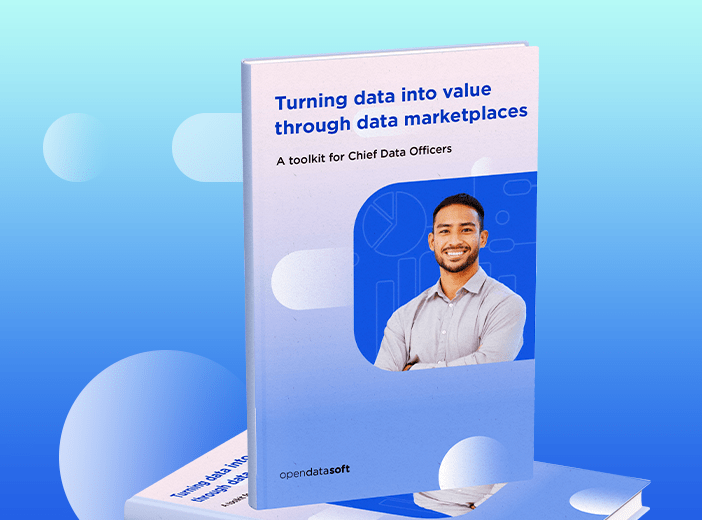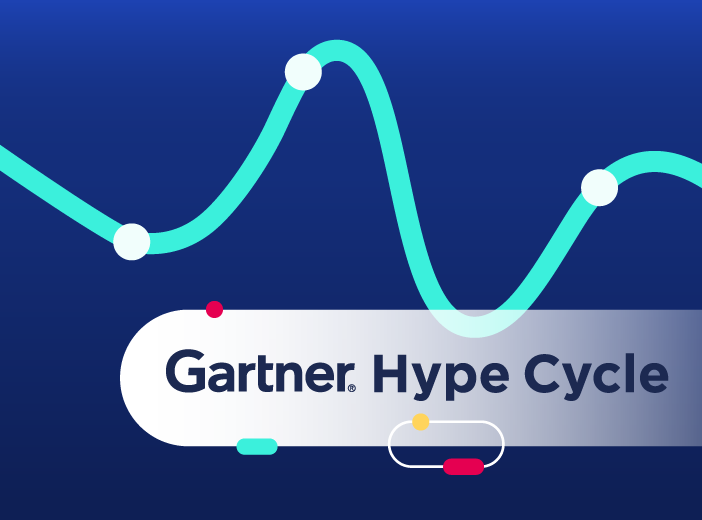How adopting a DataOps approach increases data value
The pressure is on Chief Data Officers to deliver greater value to the business, requiring a step change in team productivity and a focus on increasing data consumption. We explore how adopting DataOps methodologies helps achieve these key objectives.

Chief Data Officers (CDOs) and other data leaders face growing challenges around resourcing. They and their teams need to manage increasing volumes of data, deliver value to the business by boosting data consumption and meet new requirements such as around supporting AI initiatives. At the same time competition for data skills is intensifying, as more and more organizations look to invest in data and AI.
All of this means that CDOs need to be able to do more with less – increasing efficiency and productivity while demonstrating value through their programs. Adopting a DataOps methodology is a key approach to successfully achieving these goals.
Achieving operational excellence in data management
Gartner research shows the scale of the challenges that CDOs face. In its 2024 Chief Data and Analytics Officer Agenda Survey, 50% of respondents listed budgets and resources in their top three challenges, and 42% cited skills and staff shortages.
Overcoming these obstacles requires a focus on operational excellence in data management. Gartner defines this as “the reliable delivery of fit-for-purpose data that is at right quality, reusable, trusted and secure.”
Successfully scaling data management to achieve operational excellence requires a combination of technology and processes:
- A strong data management stack with the right tools in place to handle all aspects of the data pipeline, integrated to optimize performance and automation
- The adoption of data products to industrialize the consumption of data through ready-to-use, business focused data assets that meet a specific requirement for end users
- Federated governance that combines strong central processes with delegation to individual teams and departments to scale data management efforts while ensuring compliance
- A commitment to maximizing reuse of materials, code and processes between teams and projects, and a focus on learning and continuous improvement. This can require cultural change to encourage collaboration and openness between data teams and with the wider business
- An underlying infrastructure that combines data mesh and data fabric to create a data stack that is flexible and agile, delivering a future-proofed approach that puts data at the heart of the organization and its operations
- The ability to collect and make available high-quality, reliable AI-ready data, both for training Large Language Models (LLMs) and AI agents.
Introducing DataOps
DataOps brings the agility and principles of DevOps to data delivery, turning data into value more easily, more quickly and at scale. Just as DevOps aims to standardize and industrialize the software development process, DataOps brings together all parts of the data lifecycle to optimize performance and enable simpler and faster data management and higher consumption.
Gartner defines it as:
What does DataOps cover?
DataOps covers five key areas within data management:
- Data pipeline orchestration – automating pipeline execution, monitoring and task scheduling to make the whole process seamless and removing the need for manual human intervention
- Data pipeline observability – ensuring data remains high quality by ensuring that it follows pre-set business rules and schema on an ongoing basis
- Environment management – successfully managing the data environment and optimizing performance through techniques such as infrastructure as code and Software Development Life Cycle (SDLC) data management
- Data pipeline test automation – checking and testing that new data pipelines and changes to existing processes do not disrupt or break data flows, through dry run testing and regression test packs
- Data pipeline deployment automation – managing the ongoing deployment of new data pipelines, including focusing on versioning, Continuous Integration and Continuous Delivery/Deployment
Anyone familiar with DevOps techniques will recognize many of the same terms and processes within DataOps. Successfully deployed, it promises the same step forward in efficiency and output as DevOps has delivered for software. Gartner believes that its use will make teams 10x more productive than traditional methods.
How can you achieve operational excellence with DataOps?
As with any other methodology, DataOps success requires much more than buying and deploying a set of tools. Achieving operational excellence involves the right mix of technology, skills, processes and culture, particularly around breaking down silos between teams and departments.
Gartner outlines ten steps to ensuring DataOps programs deliver operational excellence:
1 Create collaborative, cross-functional teams
The management and consumption of data spans the whole organization, from data collection and pipeline testing all the way through to business users. These data flows require teams with a range of skills and perspectives, including data experts, IT staff, business users, and data product owners. All of these roles need to work closely together, collaborating to ensure that not only is data delivered effectively and efficiently, but that it is reliable, high quality and meets business needs. This means breaking down barriers between different departments and creating teams that collaborate around a single objective – increasing data consumption.
2 Put a standardized environment in place
Standardization is a key tenet of DataOps. To achieve this Gartner recommends creating a specific DataOps platform team responsible for creating and managing platform capabilities and services. These include the overall DataOps environment, tools, user interfaces and software assets and templates. Providing this complete service to data teams will enable them to focus on their roles in building data pipelines and data products, without having to create new infrastructure, software or code, boosting productivity and standardization.
3 Focus on data that delivers business value
Companies have huge volumes of disparate data and clearly some data assets will be more valuable than others. That means that data teams need to prioritize which to make available to users, focusing on specific projects that will deliver business value. Spending time prototyping ideas and measuring whether they meet overall objectives is vital before embarking on full data engineering projects. Gartner estimates that companies normally only move 1 in 5 prototypes to production, showing the importance of this process.
4 Connect metrics to business outcomes
Data projects need to demonstrate that they are delivering value to the business. While it is easy to measure output metrics such as data quality or faster time to insight, this is not enough to show value to business stakeholders. CDOs need to spend time researching and reporting outcome-based impact metrics, showing how projects and data assets have delivered tangible business benefits in areas such as reduced cost, improved productivity, new revenues and lower risk. This will justify current and future investments, and demonstrate the importance of the CDO and data team.
5 Automate the most manual tasks
One of the key areas for DataOps is to automate processes and remove manual work. This not only boosts productivity and frees up time, but also reduces the possibility of human errors creeping in. Areas such as testing and deployment are particularly suitable for automation as they are heavily manual tasks that require large amounts of human input.
6 Adopt data marketplaces to share data products with the business
Data delivers limited value if it remains solely in the hands of experts. It needs to be shared across the organization so that it can be easily consumed by business users, boosting productivity, efficiency, innovation and collaboration. That requires the adoption of ready-to-use data products, built to focus on specific business needs, made available by an intuitive data marketplace. The data marketplace has to deliver the same self-service experience as an e-commerce marketplace, connecting non-technical users to relevant, reliable and high-quality data and data products. It should combine seamless discovery, data recommendations and collaboration features with straightforward administration and access management processes, and enable organizations to track usage in order to continually improve.
7 Integrate governance into data pipelines
Balancing governance and data availability is a key requirement for organizations. To maximize productivity while ensuring compliance, governance processes need to be embedded within data pipelines through federated governance that automates checks, controls and audit trails.
8 Orchestrate and standardize data flows
Data stacks cover multiple solutions from different vendors. Organizations need to take a holistic view across data pipelines, creating end-to-end standardized flows that span all technologies to avoid silos and to maximize efficiency.
9 Monitor and observe the entire pipeline
Equally, data teams need to be able to monitor both individual parts of data pipelines and the overall process. This allows them to observe components such as data, infrastructure, lineage and costs, as well as measuring end-to-end performance on an ongoing basis.
10 Pick best-of-breed technology to meet your needs
No one vendor can provide the tools and functionality required for end-to-end DataOps. Organizations therefore need to choose the right technologies for each part of their infrastructure, integrating them through APIs to provide a holistic data stack. Reports such as Gartner’s Hype Cycle for Data Management help suggest relevant vendors – with the 2025 edition including Opendatasoft as a sample vendor in the Data Marketplace and Exchange (DME) category.
Turning data into business value with DataOps
The pressure is on for CDOs to maximize the consumption of their data to deliver business value. That means that now is the time to review data practices and focus on how they can be optimized. Adopting DataOps throughout the data delivery life cycle supports this key objective, increasing efficiency and data availability through data products and data marketplaces, while ensuring strong governance and quality through automation.
Learn how Opendatasoft enables your data sharing journey – click here to book a demo with our experts.




